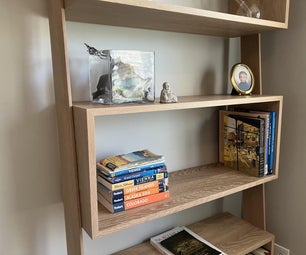Introduction: 8x4=2 (2 Tables From 1 Sheet of Plywood)
Use a simple template to create 2 tables from a single sheet of 24mm ply or 1 table from a single sheet of 12mm ply.
We use an early version of this table as work benches in our studio. We had them laser cut out of oriented strand board, sometimes known as stirling board.
In retrospect we realised that water jet cutting would have been a better option - the 'burned' edges from the laser cutting look quite cool but tends to leave you with black marks on your hands.
Step 1: Download the Cutting Template
If you want to cut the table by hand then download the 1:10 scale pdf drawing
or the dimensioned 1:10 scale pdf drawing
Alternatively you can use the dxf cutting template and have the timber CNC cut, laser cut or water jet cut.
I will add some links to waterjet cutting people here soon.
Step 2: Cut the Ply
If you are brave enough to cut this by hand you will need to mark up the upper face of a 1220mmx2440mm sheet using the downloaded drawing.
The design is fairly tolerant of inaccuracy in the jigsaw cutting but you will need to cut the slotted holes in the lid to provide a tolerant holes for the tabs on the leg frames.
If you are using 12mm ply you will need to glue and clamp the pairs of table tops and legs to eachother. PVA glue will do the trick. You should clamp the leg frames on their tabs and about 10cm from the end of each leg. The table top needs clamping over the slotted holes.
Step 3: Admire Your New Table
If you want to add additional rigidity the table top can be screwed through to the edge ply of the leg frames. Use the lotted holes as a guide for where the legs are beneath and drill a small diameter locating hole through from above before countersinking a posi-head woodscrew.
If you like this table you might like other things I do....
barnaby gunning architects









